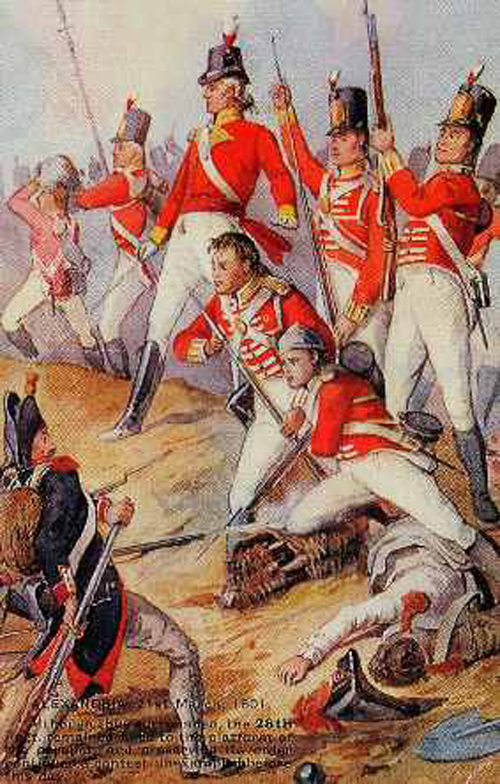 During the Battle of Alexandria in 1801 the 28th Foot (North Gloucestershire) Regiment was attacked from behind by the French. The commanding officer Lt. Col. Paget then gave the famous order “Rear rank, 28th. Right about face.” With consummate discipline the rear rank turned to face the attacking French and at short range fired one devastating volley which caused heavy casualties and forced the enemy’s withdrawal.
During the Battle of Alexandria in 1801 the 28th Foot (North Gloucestershire) Regiment was attacked from behind by the French. The commanding officer Lt. Col. Paget then gave the famous order “Rear rank, 28th. Right about face.” With consummate discipline the rear rank turned to face the attacking French and at short range fired one devastating volley which caused heavy casualties and forced the enemy’s withdrawal.
For this action the regiment was allowed the distinction of wearing badges on both the front and rear of the head-dress. Only the two regular battalions of the Gloucestershire Regiment, formed by the amalgamation of the 28th and 61st Regiments which occurred as a result of the Cardwell/Childers reforms of the British Army in 1881 were allowed this distinction. Militia and Volunteer battalions were not allowed this distinction.The back badge had two lugs which perforated the helmet shell. In the case of officer helmets which had the metal back-strap the badge is “Usually found bent so as to fit over the ¼” convex brass bar that runs down the centre back…” 1 Other examples feature a slider which fits between the puggaree and the helmet shell.
There are examples of the wreath not meeting at the top and others where the Sphinx’s tail touches the wreath. These are manufacturers’ variations or could be battalion distinctions. 2 The front badge would normally be of the slider type when the helmet had a puggaree.
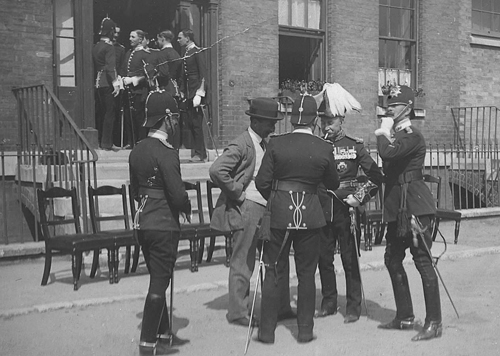
A group of officers of the Gloucestershire Regiment with the back-badge clearly visible. (Courtesy Soldiers of Gloucestershire Museum)
The back-badge was fitted to the Home Service Helmet, Colonial Pattern Helmet, the Wolseley Helmet, the Forage Cap (Staff Pattern) and the Khaki Sola Pith Hat.
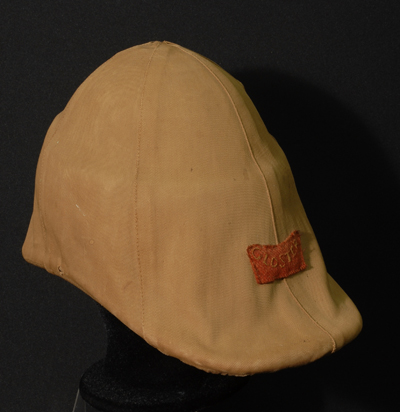
A Colonial Pattern Helmet with khaki cover which shows the material flash sewn to the cover. Worn by Corporal W.C. Bridge, 2nd Battalion, 1899-1902. (Courtesy Soldiers of Gloucestershire Museum)
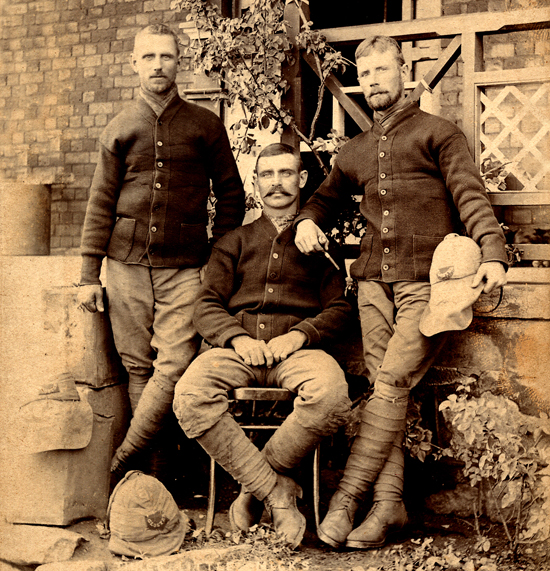
The flash sewn to the puggaree at the rear of the Colonial Pattern Helmet is beautifully illustrated here. (Courtesy Soldiers of Gloucestershire Museum)
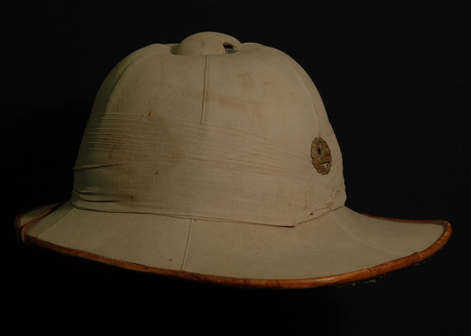
A large version of the back-badge affixed to a Wolseley helmet, c1908-1923. (Courtesy Soldiers of Gloucestershire Museum)
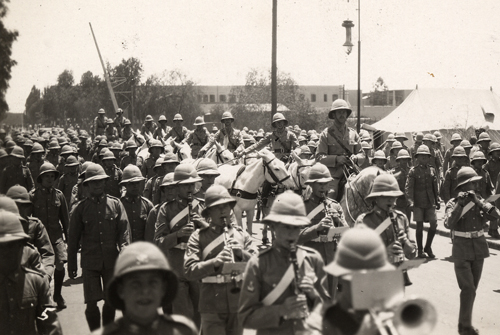
Note the front badge on the Wolseley Helmet worn by the soldier in the immediate foreground. 1st Battalion in Egypt c1928. (Courtesy Soldiers of Gloucestershire Museum)
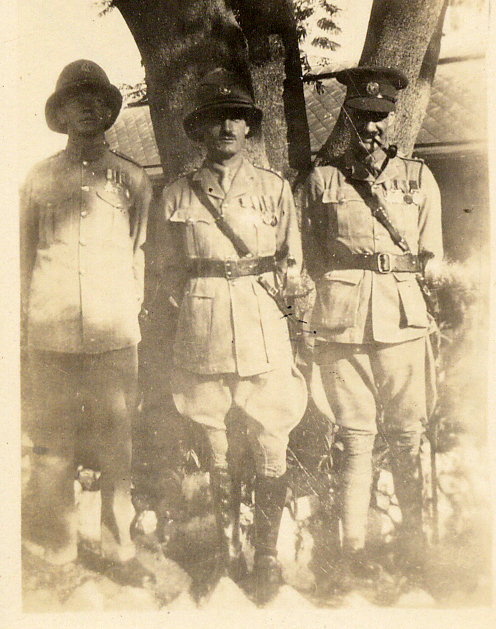
An interesting group-photo showing the front badge on the Wolseley Helmets and on a Khaki Serge Field Service Cap. (Courtesy Soldiers of Gloucestershire Museum)
Stuart Bates
1. Brinson, Daniel, Military Insignia of Gloucestershire, Covithick, 2009
2. Ibid

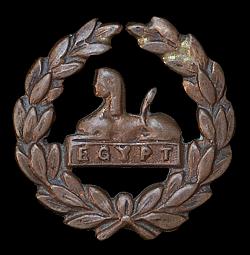
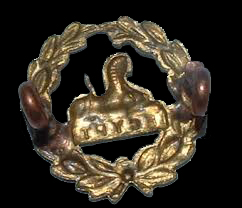
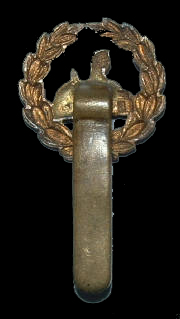
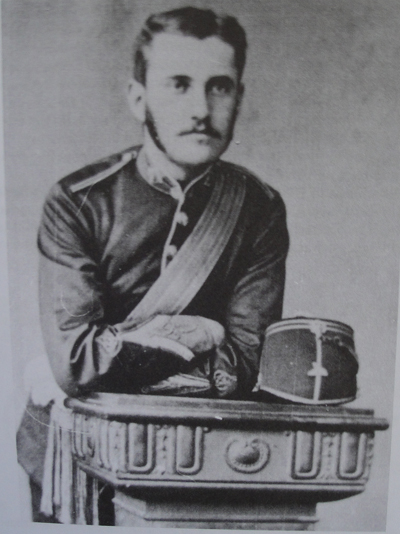
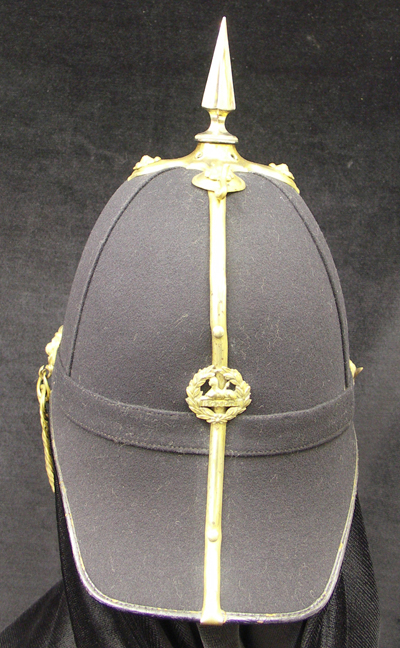
A very interesting article with history that was unknown to me, thanks for posting this and thereby educating this poor old amateur historian.
Regards
Brian
There is a film on the IWM website showing Ist Battalion Glosters in Burma in 1941still wearing the sola topi. I have not yet been able to detect a back badge, and many of the topis have camo nets on them, but they must surely be present.
http://www.iwm.org.uk/collections/item/object/1060018645
Yes it is impossible to be definitive given the quality and the camo netting but I thought I spotted something at 1:16 in on the pith hat of the soldier on the right.
Stuart
With reference to the battle of Alexandria, the Glosters regimental museum website includes this telling detail with regard to the famous command “Right about face” :
‘It should be noted that Coates ascribes the famous order to Colonel Paget, although, since Paget had been wounded in the throat, it is perhaps more likely that it was his second in command, Lieutenant Colonel William Chambers, who gave the order.’
The chapter goes on to quote at length the memoir written by Sergeant Joseph Coates of the 28th.
http://www.glosters.org.uk/textonly_timeline/3
The illustration, which in common with most shows the 28th in Home Service clothing, includes the rarely mentioned detail that by the end of the action both the 28th and the French light infantry in the ditch below their redoubt eventually ran out of ammunition and resorted to throwing stones at each other. Apparently a sergeant of the 28th was struck on the head and died. Perhaps if he had been wearing a shako instead of a Tropical Service round hat he might have survived!
One wonders whether the shako gave any protection at all and to anything! It was apparently not well liked by the soldiery as being quite uncomfortable and to the extent of causing headaches.
Stuart